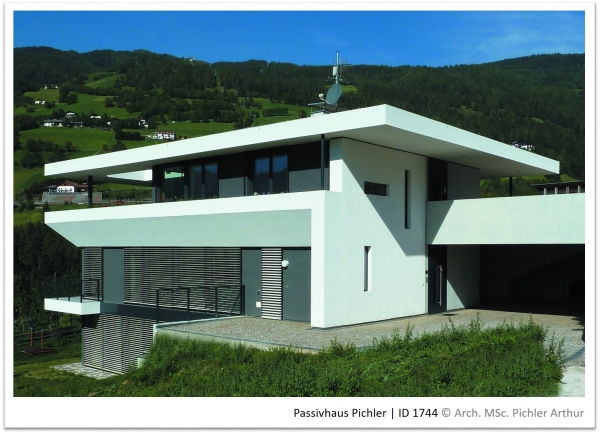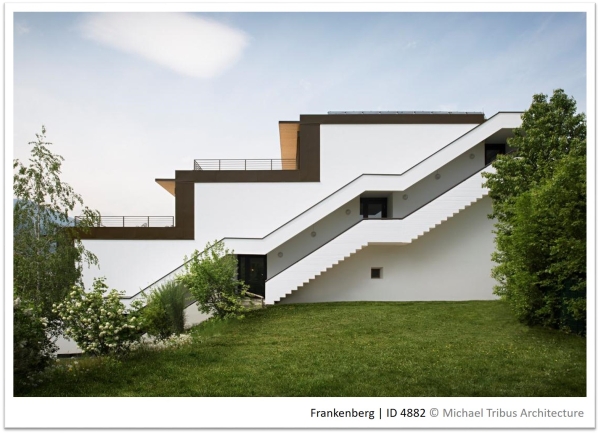3. A Passive House for everybody
| Site: | Passive House Online Training | Passive House Institute |
| Course: | Passive House for Decision makers |
| Book: | 3. A Passive House for everybody |
| Printed by: | Guest user |
| Date: | Sunday, 2 November 2025, 8:24 AM |
1 - Video presentation
TRANSCRIPT
You are interested in the Passive House concept, but you don‘t want to live in a wooden box in Germany?
Don‘t worry, the Passive House concept works for many kinds of buildings. Whether you are into curves, organic or square architecture, you will find many different examples of Passive House buildings.
Check out the smallest Passive House in the world, energy-efficient skyscrapers or a whole Passive House district. There is way more than residential units - you can also enjoy yourself at a Passive House museum or swimming pool building. Wether you fancy concrete or natural materials, traditional or modern architecture, there is something for each taste and budget! Most Passive House buildings are new, but old buildings can be efficiently retrofitted using passive house components and techniques.
Moreover, there is no fixed set of parameters to reach the Passive House standard. Compact buildings are ideal but a less compact shape can be compensated with better quality windows and airtightness for instance.
And no matter your location, the Passive House standard works everywhere, because it is based on the laws of physics! Be it warm, cool-temperate or hot and humid, get a draught-free, cosy and airy building right now! Need some more inspiration?
Then check out The Passive House database! Passive House buildings are just normal buildings built better!
TO REMEMBER
- Passive House buildings can be
- of any shape
- of any size
- of any type
- of any architectural style
- of any construction material
- new or retrofitted
- built worldwide!
- No fixed set of parameters to reach the Passive House standard
2 - Further material
Passive House projects worldwide
Within the last several years, the Passive House has rapidly gained popularity, with over 60,000 residential and non-residential units in existence worldwide, and more than 14,000 certified according to strict Passive House Institute certification criteria. You will find Passive House dwellings, hotels, schools, museums, hospitals, factories and offices in more than 40 countries!
Many early Passive Houses were boxy, but as designers have grown more comfortable with the concept and the modeling software, Passive House buildings have become more elegant and inventive. Check out Passive House projects worldwide on the Passive House Database and in the Passive House Award book. You can also have a look at the Passive House Designer website for detailed documentation.
International Passive House association
iPHA is a global network of Passive House stakeholders including architects, planners, scientists, suppliers, manufacturers, contractors and property developers. It works to promote the Passive House Standard and foster a greater public understanding of its significance. Encouraging the exchange of Passive House knowledge, iPHA communicates with the media, the general public and the entire range of construction professionals.
iPHA and its German affiliate, IG Passivhaus Deutschland, are communication initiatives of the Passive House Institute, Darmstadt, Germany, ensuring the highest level of technical expertise, professional competence, independence and objectivity.
Get in touch with your closest iPHA affiliate right now!
Energy-efficient retrofit
It is not always possible to achieve the Passive House standard for refurbishments of existing buildings, even with adequate funds. For this reason, the PHI has developed the “EnerPHit – Quality-Approved Energy Retrofit with Passive House Components” Certificate.
Significant energy savings of between 75 and 90 % can be achieved even in existing buildings, for which the following measures have proved to be particularly effective: improved thermal insulation and airtightness, reduction of thermal bridges, use of high quality windows, ventilation with heat recovery, efficient heat generation and renewable energy sources. Be it a one-shot or a step-by-step refurbishment, with exterior or interior insulation, there is a solution to make your existing building more energy-efficient!


